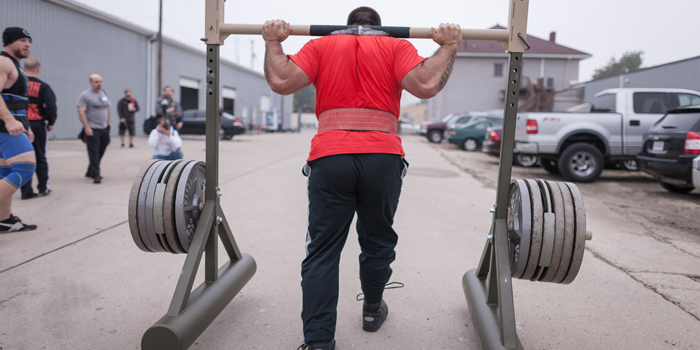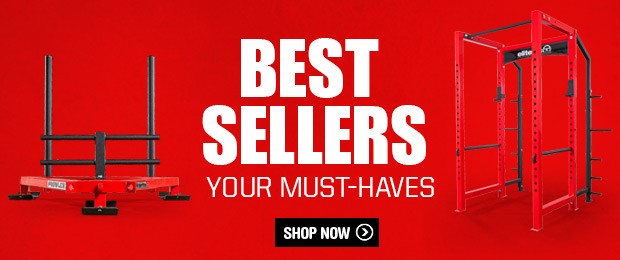
It's been a while since I've written anything for elitefts, and during that break, I've learned a lot. I am going to share with you one of the things I've learned over these last two years: how to use the strongman adjustable yoke to improve your overhead press and bench press.
The yoke is most commonly used for the traditional carry (performed by carrying the yoke on one's back) and the Zercher carry (performed by holding it in front of the body in the elbows). Using it to build the bench and shoulder press is not a common practice.
First, I will tell you why adding these exercises can help you. Most people are weak off the bottom of both the overhead press and bench press (I am weak there myself). It's very hard for most to absorb the force at the bottom of the bench and push the bar up. Likewise, it is very hard for most people to generate the force needed to drive the bar overhead for shoulder presses.
RELATED: Seriously Incorporating Strongman...Seriously
Doing the dead-stop yoke bench and overhead press addresses both these issues. Both movements force you to get incredibly tight everywhere and force the yoke up with absolutely no rebound. Some might say, "Can't you just do a pin press?" To them, I say, "That's exactly what's wrong with the pin press." Even though you start at a dead stop when you begin, once you have ended your descent with the bar, it bounces on the pins. This bounce is jarring and creates an energy leak that increases as you fatigue through more sets. The same holds true for shoulder pressing off pins; you have to deal with the recoil. In addition to that, all the versions I have tried do not put you in the loaded position like this one does. One other thing to point out is the fact that the yoke is going to swing a lot, which will force you to keep your core tight. I would still highly recommend using a belt, preferably the elitefts 13mm belt.
Now let's discuss how to program these movements to get the most out of them. The first is the yoke bench press. I would suggest using this as an accessory and doing anywhere between four and six sets of three repetitions after your heavy bench work. If you can do more than this, you are a beast and I would like to see the video. If your bench is really terrible, program it in just for practice twice a week on a day you don't bench. Keep the sets the same but don't chase poundage. Do a bit of volume with it (five to six reps), adjusting the weight based on how strong you are.
Programming the overhead yoke press also depends on how you want to use it. I would recommend using it as a main movement due to the yoke's weight (the one I use weighs 165 pounds). Your set and rep range should be four to six sets of three to four reps. The reason why they are so low is self-explanatory — you are exerting a lot of force to move the yoke, and higher reps are just not suitable for this.
These two movements are guaranteed to boost your bench press and overhead press due to the overload that the yoke provides. One of my lifters is on his way to a 500-pound raw bench just from adding this in. As always, feel free to leave comments below.
Charles Gardner has been training for over 15 years and has worked for Oakwood University, a major HBCU, for seven years as their weight room director and physical education professor. He has a Bachelors of Science, is certified as a strength coach through the ISSA, and is currently seeking his Masters in Exercise Science.










3 Comments